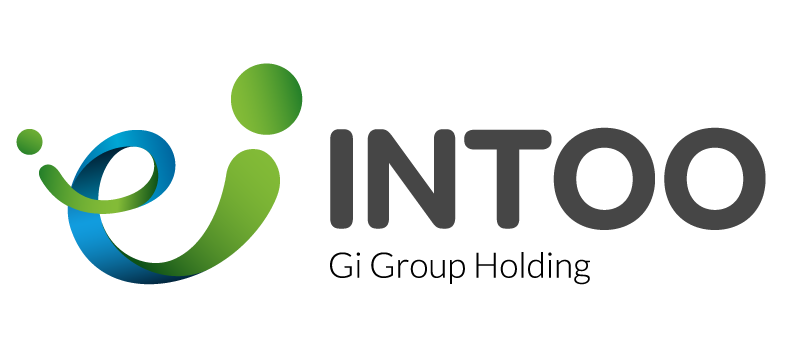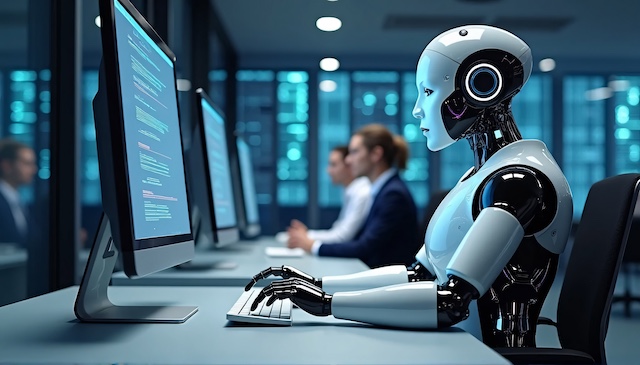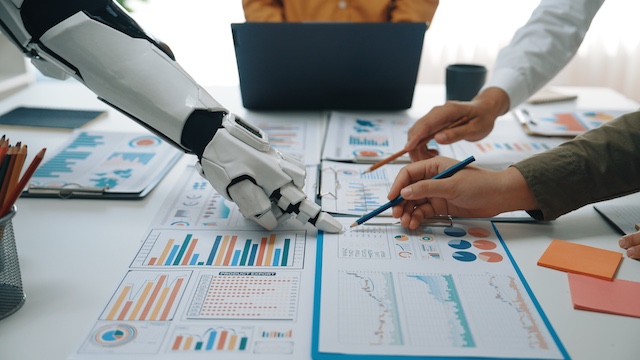Artificial intelligence (AI) is no longer a futuristic concept; it’s a present-day workplace reality.
From factory floors to corporate offices, AI-driven automation is streamlining processes and changing how decisions are made.
This rapid rise of AI is prompting a pressing question for business leaders: Is AI taking over jobs? Global estimates suggest that AI and automation could displace approximately 85 million jobs by 2025, while 97 million new tech-administered roles emerge to complement human labor.
In this article, we examine why AI’s rise matters for employers, identify the jobs most likely to be impacted, and outline five steps organizations can take to capitalize on AI to thrive in an AI-powered economy.
Why the Rise of AI Matters for Employers
AI’s growing influence carries enormous implications for companies, workers, and the broader economy. As businesses adopt AI to improve organizational peformance and automate routine tasks, they will need to redefine team structures, job responsibilities and their required skills, and even how they measure success.
Roughly two-thirds of occupations are exposed to some degree of automation driven by AI. That means everything from manufacturing and transportation to finance and customer service could see major disruptions as a result of changeovers to this technology. While AI offers efficiency and cost advantages, it also raises critical questions about workforce planning, ethics, and employee development.
d It’s vital that employers respond to these shifts by preparing to redeploy employees into new tech-aligned roles while upskilling others to work effectively alongside intelligent machines.
Jobs Most Likely to Be Affected by AI
Not all jobs face equal risk of elimination or change. Some are highly susceptible to automation, while others are simply evolving to include AI as a co-pilot.
Here’s a breakdown of the roles most likely to be affected and how team structures may alter as a result:
1. Administrative and data entry roles (high risk)
Repetitive office tasks, such as data entry, scheduling, invoice processing, and basic documentation, are prime targets for automation. AI tools can perform these tasks faster and with fewer errors. Employers may repurpose or eliminate some administrative roles as digital tools take over much of the operational workload.
2. Customer service representatives (high risk)
AI-powered chatbots and virtual assistants are now processing a broad range of customer inquiries, from basic questions to troubleshooting. This reduces the need for large service teams. Companies are shifting from traditional support models to smaller human teams that handle complex cases while AI manages the routine ones.
3. Manufacturing, warehouse, and transportation jobs (high risk)
Automation in logistics and production—think robotics, autonomous vehicles, and AI-driven quality control—is reducing dependence on manual labor. In warehouses and factories, AI is streamlining the processes of picking, packing, and shipping. Human roles are remaining in or moving toward system oversight, equipment maintenance, and process optimization.
4. Retail and hospitality staff (high risk)
Self-checkouts, AI kiosks, and robotic assistants are becoming standard in retail stores, restaurants, and hotels. This technology reduces the need for cashiers and front desk staff, allowing teams to serve more personalized, high-touch customer experience roles that AI supports.
5. Media, marketing, and content creation (evolving)
AI tools are already writing content, designing graphics, and editing videos. Rather than replacing creatives entirely, AI is changing their workflow. Junior roles may decline, while demand increases for professionals who can guide, refine, and creatively direct AI-generated content.
6. Evolving team structures and management styles
As AI takes over task-based functions, team leaders must rethink how work is allocated. The future workforce may include human-technology hybrid teams where human creativity and decision-making complement AI’s speed and precision. Managers will need to balance technical oversight with human development, as well as empathy.
5 Steps to Adapt to AI in the Workplace
The organizations that will find success in the AI era are those that plan, invest, and evolve deliberately. Rather than reacting defensively to change, these companies take proactive steps to transform risk into opportunity.
Below are five essential strategies to help your business prepare, adapt, and lead in an AI-powered economy.

1. Assess and strategize early
Before deploying AI, leaders must gain a clear understanding of their organization’s current state. This starts with a comprehensive task and process audit.
- What parts of your operation are repetitive, data-heavy, or rule-based? These are prime candidates for automation.
- Which roles require empathy, creativity, or complex decision-making? These are less likely to be fully automated but may still be augmented.
Example: A mid-size insurance firm mapped all customer service interactions and found that 60% of inquiries were policy-related FAQs. By implementing a chatbot to handle these, they freed up human agents to focus on claims and customer retention, both of which benefit from a human touch.
Action Tip: Form a cross-functional team to create an AI-readiness map. Identify high-automation areas and define where human effort is critical. This becomes the basis for your 12- to 24-month AI strategy.
2. Invest in technology and skill development
AI is only as powerful as the people who use it. Smart organizations build talent by allocating resources for both:
- Tech stack upgrades: AI software, cloud infrastructure, analytics platforms
- Learning and development: Upskilling, reskilling, and digital literacy initiatives
Example: A media company launched a reskilling program to retrain thousands of employees in AI, cybersecurity, and cloud computing. The initiative prepared their workforce for new roles while avoiding large-scale layoffs.
For smaller companies, this can be as simple as:
- Providing access to online learning
- Hosting AI workshops or “lunch & learn” sessions
- Partnering with local universities for short-term certificate programs
Action Tip: Identify skill gaps in your current workforce using surveys or performance data. Then, build a phased learning plan aligned with business goals (e.g., training customer service representatives to manage and refine chatbot interactions).
3. Redesign roles and workflows
Instead of removing people from the equation, AI often reshapes how work is done. Organizations should reconsider job descriptions, decision trees, and process flows to enable AI to automate tedious tasks, allowing humans to focus on value creation.
Example: In marketing, teams are shifting from traditional content production to an AI-augmented content strategy. AI-integrated tools can generate first drafts, allowing marketers to spend more time on strategy, brand storytelling, and performance analysis.
In finance departments, instead of manually reconciling transactions, employees may oversee AI-driven accounting bots and use dashboards to identify anomalies or forecast trends.
Action Tip: Bring together operations, HR, and tech teams to reimagine high-impact roles in your organization. Create human-technology hybrid role templates like:
- “AI-augmented Recruiter”
- “AI-enabled Analyst”
- “AI Workflow Supervisor”
This reframes the future of work as a partnership between people and machines, not a takeover.
4. Communicate and support your workforce
The introduction of AI can create fear, uncertainty, and resistance among employees unless it’s paired with clear, effective communication and strong support systems.
Your people need to know:
- Why AI is being introduced
- How it will impact their roles
- What support is available
Example: A logistics company implementing warehouse automation held a series of employee town halls to outline its three-year tech roadmap. They shared which tasks would be automated, reassured employees that no one would be laid off immediately, and introduced a voluntary reskilling program for those who wanted to shift into tech or maintenance roles.
Action Tip: Create an internal AI communication plan that includes:
- Executive video briefings
- FAQs and timelines
- One-on-one career planning sessions
- Mentorship or buddy systems for transitioning roles
Support must be both emotional and practical. People are more likely to embrace change if they feel seen, heard, and equipped to succeed.
5. Ensure ethical and responsible AI use
AI can amplify biases, violate privacy, or lead to unintentional discrimination, primarily when used in hiring, promotion, or performance management. Responsible AI adoption requires governance, auditing, and ethical foresight.
Example: A tech startup used AI to screen resumes but discovered it was unintentionally favoring male candidates due to biased training data. They paused implementation, retrained the model with diverse datasets, and established a review panel to oversee future use.
Best practices include:
- Conducting bias audits and algorithm transparency checks
- Creating an internal “AI Ethics Committee”
- Documenting decision logic in sensitive processes
- Offering opt-outs where possible (e.g., human interview over AI screening)
Action Tip: Create an “AI Code of Conduct” aligned with your company values. Ensure every AI tool in use is compliant with local laws (e.g., GDPR, EEOC) and regularly evaluated for unintended consequences.
Conclusion
AI is transforming the world of work not only by replacing jobs but also by reshaping how organizations operate.
Employers who approach this transformation with intention and strategy will emerge stronger, more innovative, and more resilient. By proactively adapting your workforce, redesigning roles, and investing in ethical AI deployment, you can turn disruption into a competitive advantage.
Rather than fearing the future, forward-looking leaders will embrace AI as a catalyst for smarter business.
INTOO can help your employees embrace change, develop skill sets that empower them in AI-driven roles, and create a plan to grow as your organization’s processes shift. Learn more about our range of career development programs by contacting us today.











